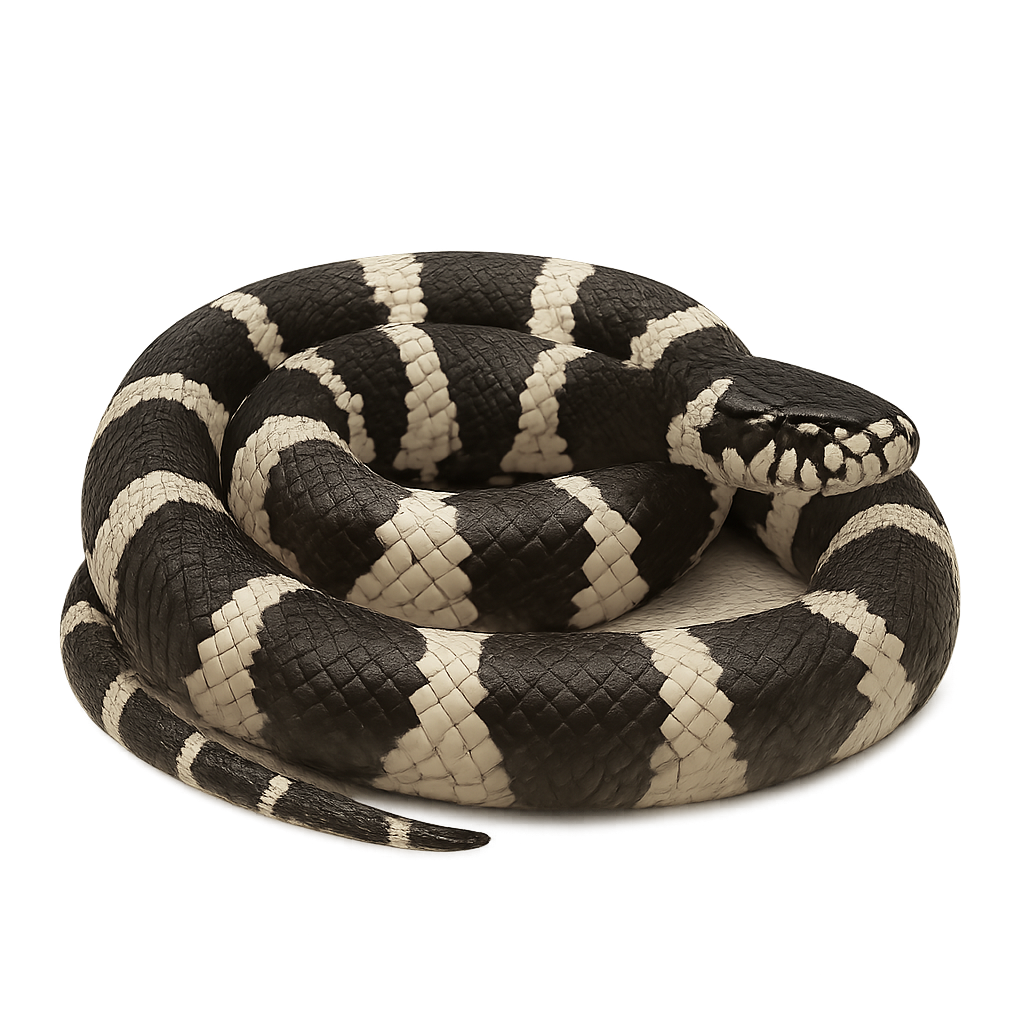Your wildlife photography guide.
Explore the common kingsnake in detail, study its behavior, prepare your shots.
Where to observe and photograph the common kingsnake in the wild
Learn where and when to spot the common kingsnake in the wild, how to identify the species based on distinctive features, and what natural environments it inhabits. The WildlifePhotographer app offers tailored photography tips that reflect the common kingsnake’s behavior, helping you capture better wildlife images. Explore the full species profile for key information including description, habitat, active periods, and approach techniques.
Common kingsnake
Scientific name: Lampropeltis getula

IUCN Status: Least Concern
Family: COLUBRIDAE
Group: Reptiles
Sensitivity to human approach: Tolerant
Minimum approach distance: 3 m
Reproduction period: September to October
Incubation: 50–80 jours
Births: September to October
Habitat:
forests, grasslands, rocky areas
Activity period :
Mainly active at night, generally discreet during the day.
Identification and description:
The Lampropeltis getula, commonly known as the common kingsnake, is a non-venomous snake native to North America. It is renowned for its ability to resist the venom of other snakes, allowing it to hunt and consume them. This snake exhibits a varied coloration, often black with white or yellow bands. It can reach a length of 1.2 to 1.8 meters. The kingsnake is an opportunistic predator that feeds on rodents, birds, lizards, and other snakes. It is generally active at night and prefers habitats such as forests, grasslands, and rocky areas. Although often captured for the pet trade, it remains abundant in the wild.
Recommended lens:
Macro – adjust based on distance, desired framing (portrait or habitat), and approach conditions.
Photography tips:
To photograph the kingsnake, it is advisable to use a macro lens to capture the details of its skin and distinctive patterns. Approach slowly and maintain a safe distance of at least 3 meters to avoid disturbing it. Opt for twilight or nighttime hours, as this is when it is most active. Use a tripod to stabilize your camera and achieve sharp images, especially in low-light conditions.
The WildlifePhotographer App is coming soon!
Be the first to explore the best nature spots, track rutting seasons, log your observations, and observe more wildlife.
Already 1 432 wildlife lovers subscribed worldwide

